WEBINAR: Emerging and Reemerging Diseases in Soybeans
We know that tractors are beginning to role and April is not an ideal time for a webinar. That's why for the first time, ILSoyAdvisor is offering an on-demand webinar that's convenient for your schedule. Whether it's first thing in the morning or after you've turned the shop lights off, be sure to watch Nathan Kleczewski's "Emerging and Reemerging Diseases in Soybeans" during April. Kleczewski discusses two new diseases growers and consultants should be on the look out for in 2019 as well as more established diseases to remember to scout for. He offers practical, economical information on managing [...]
The Row Spacing Conundrum
What is the best row spacing for soybeans: 7.5, 10, 15, 20 or 30 inches? That is a question I got one morning in April. My short answer was: it depends. I have been tracking row spacing and yield on soybeans for 15 years now and my conclusion is that soybeans can yield similarly regardless of row spacing and narrow rows don’t always outyield wider rows. Today row spacing for soybeans seems to be driven by the row spacing for corn. If you plant corn in 30-inch rows you will plant soybeans in 30-inch rows. If you plant corn [...]
Herbicide Planning for the Upcoming Season
When making production plans for this upcoming growing season, weed management should be at the forefront of your thoughts. In order to “start clean and stay clean” here are some important things to think about. What are your main weed problems? What are the life cycles of the problem weeds? What is the availability of equipment to ensure proper herbicide timing? What were the past herbicide programs and are there issues with herbicide resistance? What herbicide plan will you make for this season? First thing to think about is what your weed problems are. In my area the three [...]
Cold, Wet, Frustrating
We can sum up fall and winter, and now spring, in a few words; cold, wet, frustrating. While we still want to plant as early as possible, we need to consider the consequences, especially as they relate to soil compaction. Compaction creates all kinds of issues whether fall or spring. Filing in ruts creates extra work, whether in the fall or spring. Yield is the bottom line, and yield can definitely take a dive on compacted soils. Soil compaction is an issue whether soil is wet or dry, because it changes the air, water and plant root interactions in [...]
My “Never See a Weed” Philosophy for Soybeans
In the past, it was common to use herbicides that do NOT provide residual control for controlling weeds in soybeans. With the most popular herbicides we had at that time, we could let weeds grow and then control them with multiple herbicide passes. Today, with herbicide resistant waterhemp, I would suggest that we cannot allow waterhemp to even emerge from the ground because we cannot rely on those herbicide sites of action anymore. Therefore, I am promoting a “never see a weed in your field” philosophy of weed control in soybeans. Here is my definition of this philosophy: “Using [...]
Soy-based Fertilizer
If you are an organic farmer and looking for a source of organically certified nitrogen, a soy-based fertilizer is available. Soybeans have many unique uses beyond crude protein for livestock, vegetable oil and biodiesel. They have food and industrial uses as well, and recently a company started marketing Dust, a seed box lubricant made from soybean protein isolate to replace talc. There is also a nitrogen fertilizer made from soybean meal. Grower’s Secret manufactures two products, one with an analysis of 14-0-0 and one with 16-0-0. They purchase organically produced soybeans and mechanically extrude the oil with an impeller. [...]
Soybean Planting Date: Cussed, Re-cussed, and Discussed
Soybean planting date. Plant early. What’s early? February? March? Before corn? Simultaneously with corn? These questions and many, many more come up in discussion whenever this topic is broached. And it comes up often these days. Over the past few seasons, agronomists have been recommending that growers move soybean planting dates earlier to get higher yields. Growers have responded by adopting earlier planting in greater numbers than many of us who made these recommendations expected. My first comment is that the term “early” is very subjective and relative. Everyone gets a picture in their head when the term early [...]
When Planting Early does More Harm than Good
Every meeting this winter presenters talked about planting soybeans early. We must remember that the first major factor in raising any crop is the soil conditions at planting time, not what the calendar says. To ensure the crop gets off to the best start possible, seed should be planted into good soil conditions. We want all the plants to come up within 24 (if not 12) hours of each other under ideal emergence environments. Otherwise, plants that emerge later than the rest of the stand will struggle to catch up and will effectively be sapping nutrients and resources away [...]
Five Tips to Better Manage Soybeans-Following-Soybeans
Although the USDA has forecasted corn acres to be up in 2019, there will no doubt continue to be some acres of soybeans-following-soybeans. For many growers, soybeans require less input cost and the ability to forecast a more consistent yield, making soybeans a desirable crop when the farm economy is down. Growing soybeans multiple years in a row may not be as easy as it sounds, however. Researchers at the University of Wisconsin suggest as much as a 5% decrease in yield for 2nd year soybeans and 12% in 3rd year soybeans. Here are some tips to help make [...]
5 Reasons to Stop Your Higher Soybean Population
In the past, a higher soybean population was planted because growers used a drill and wanted a faster canopy to intercept light to reduce weed competition. With the greater use of residual herbicides (don’t skip the pre-herbicide), increased populations to aid in weed control aren’t as important anymore. In a recent webinar, Early Season Weed Control for Improved Weed Resistance Management, Dr. Bryan Young with Purdue University shared that the faster closure of canopy for weed control was achieved by reduced row spacing and not by (increased) seed population. With higher seeding rates, soybeans can increase in height and [...]

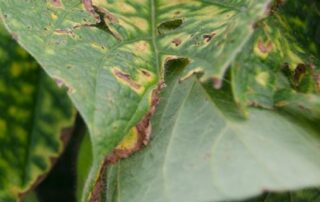
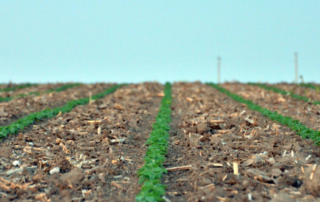
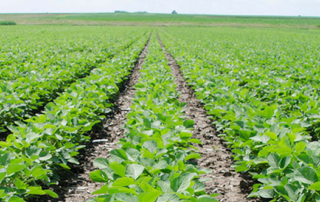
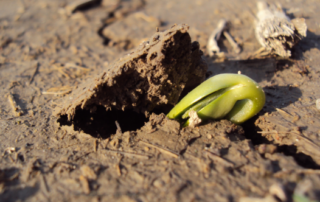
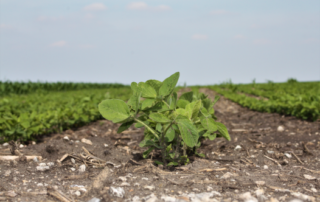
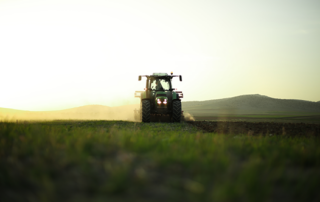
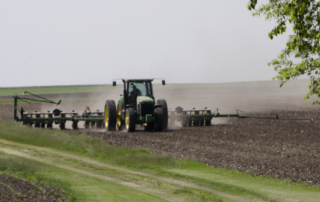
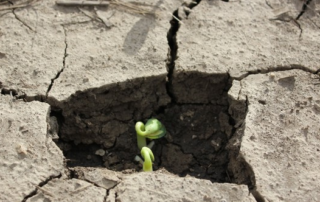

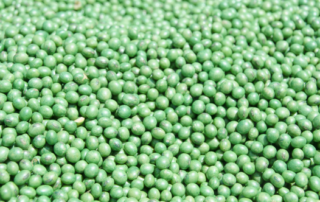



 and then
and then